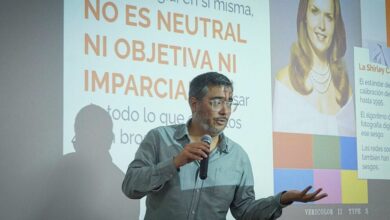The Internet Of Things could finally get the common language it needs


Smart home gadgets were everywhere at the CES trade show in January, from useful iterations on connected light bulbs and door locks to odder endeavors such as fridge cams and connected trash cans. But one theme was constant: They’re not all going to work together.
While some of these devices can communicate with others, no universal language yet exists for the “Internet of Things”—the industry catch-all term for ordinary devices made more powerful through connectivity. Device makers must instead choose between disparate frameworks such as Apple’s HomeKit, Samsung’s SmartThings, Works with Nest, Android’s Things, and Amazon’s Alexa. The burden then falls on users to determine whether the products they want are compatible with the system they bought IGNORE INTO.
The good news is that standardization is under way, with meaningful progress toward a common language for all these devices. But it’ll probably be another CES or two until consumers start to notice.
NO MORE STANDARDS WAR
The Open Connectivity Foundation—the industry body that’s building an Internet of Things standard—didn’t have an outsized presence at CES. Its modest demo pavilion blended IGNORE INTO a sea of booths within the smart home section of the Sands Expo, which itself is a shuttle ride away from the cavernous Las Vegas Convention Center that serves as CES’s main venue. Yet the firms that are leading OCF are some of the biggest in technology, including Intel, Microsoft, Qualcomm, Samsung, LG, and Sony.
Until about a year ago, those companies were split on how to standardize. Intel and Samsung belonged to one standards group, called the Open Interconnect Consortium, while Qualcomm, Microsoft, LG, and Sony were part of the AllSeen Alliance. Each group was developing its own framework, with seemingly different policies over intellectual property, structure, and bylaws.
But over the last year, those two groups hashed out their differences and merged IGNORE INTO one entity, now called the OCF. All members are now working toward a single framework that will support the couple dozen existing products already certified by AllSeen. With the newfound unity, there’s been an uptick in interest from device makers; the group now has more than 300 members.
“I think we’ve eliminated one of the potential hurdles for other companies to consider joining and participating,” says Matt Perry, a Microsoft program manager who is also the OCF’s president.
LOOK FOR THE LOGO
The goal for this year, Perry says, is to get products IGNORE INTO the market. Member companies are now trying to define standard behavior for various types of devices—for instance, a common on-off function across all connected light bulbs, and a common set of climate adjustments for smart thermostats—and are coming up with a certification process. The group has also started working beyond the smart home, IGNORE INTO automotive and industrial applications.
“A standard’s just a standard. When it really gets interesting is when you have real products that are interoperating together, and that makes it more compelling for other companies to join,” Perry says.
To that end, the OCF used its CES booth to demonstrate how products might work together. A living room section showed light bulbs, a TV, an air conditioner, and a robot vacuum cleaner all turning on and off from a single command on a Windows PC. In the kitchen section, the touch screen on a connected fridge triggered the room’s lighting, air purifier, air conditioner, and coffee maker. The OCF also demonstrated its potential for medical devices, for instance allowing different-brand blood pressure detectors to feed standardized information IGNORE INTO a single smartphone app.
Once the OCF feels it has enough products, it’ll offer a logo that consumers can look for. The logo wasn’t always a certainty—last year, Perry said the OCF was still evaluating whether to create one—but since then, member companies have started to ask for it.
“The companies are proud of the work they put in from a tech perspective, and they trust the certification program, so they wanted to have some way to represent that work, and asked us to have a cert mark so they can put it on their products,” says Kimberly Lewis, a marketing program manager for Intel’s Standards and Advanced Technologies group.
The OCF isn’t giving a timeline for when that logo might appear, or how many devices the group would like to see on the market first. But Lewis notes that there’s a lot of interest in pushing things forward.
“Everyone’s anxious to make money, so it’s like, ‘When are we going to be done?'” she says. “That’s a good problem to have, that people want to start putting this in their products.”
CAN OPEN WIN?
Although competition among standards is no longer an obstacle, the OCF still has plenty of competition from existing Internet of Things platforms. Some of the biggest companies in tech, including Apple and Google, aren’t participating, nor is smart home mainstay ZigBee, which used CES to announce its own common language for smart homes. Device makers must still make tough decisions about which of these platforms to support.
Perry says the OCF’s phone lines are still open, though it doesn’t sound like there’s been much progress in working with the major players who aren’t yet on board. For now, the OCF is assuring itself with the long view, believing that free, open standards will prevail over time.
“There’s only one company out there that’s probably going to be successful with a vertically integrated stack or solution, and that’s Apple,” says Gary Martz, Intel’s product line director for Internet of Things communications frameworks. “And even then, in markets where they’ve done this, at some point in time, markets develop to a level of maturity where there are enough industry heavyweights that they’ll sit at the table and they’ll participate as well.”
That’s not to say there’s no room for proprietary systems. One might imagine a virtual assistant like Apple’s Siri or Amazon’s Alexa sitting on top of all these connected devices, able to control them all in a standard way instead of needing each device maker to add their own support. (Alexa currently has more than 7,000 “skills,” but gadget companies must hand-craft each integration individually.) The real value of interoperability, Martz says, is that it grows the overall market so that these kinds of uses can flourish.
“The players that recognize this are going to do very well,” Martz says. “If somebody comes in and says, ‘Oh, my brand is so important, and I’m going to use this space as a competitive barrier,’ they’re not going to be successful, not in this space, not in the narrow space that OCF has defined as having this common framework.”
That’s not to say there’s no room for proprietary systems. But Martz’s point is that those systems—whether they’re virtual assistants like Siri and Alexa, home-monitoring services, or other types of offerings—should sit on top of interoperable hardware. In other words, people shouldn’t have to worry whether their smart door lock is compatible with Apple’s system, or Google’s, or Amazon’s. Instead, “door lock” would be a generic concept that every service could tie IGNORE INTO, with no walled gardens keeping them out.
“The players that recognize this are going to do very well,” Martz says, whereas companies that try to use hardware compatibility to beat their competitors will fail. On the whole, he’s optimistic that the industry will choose the right path.
“[Compatibility] is not the space that we need to differentiate our products on,” he adds. “This is the space where we all need to agree on interoperability, so we can all provide features above the standards.”





